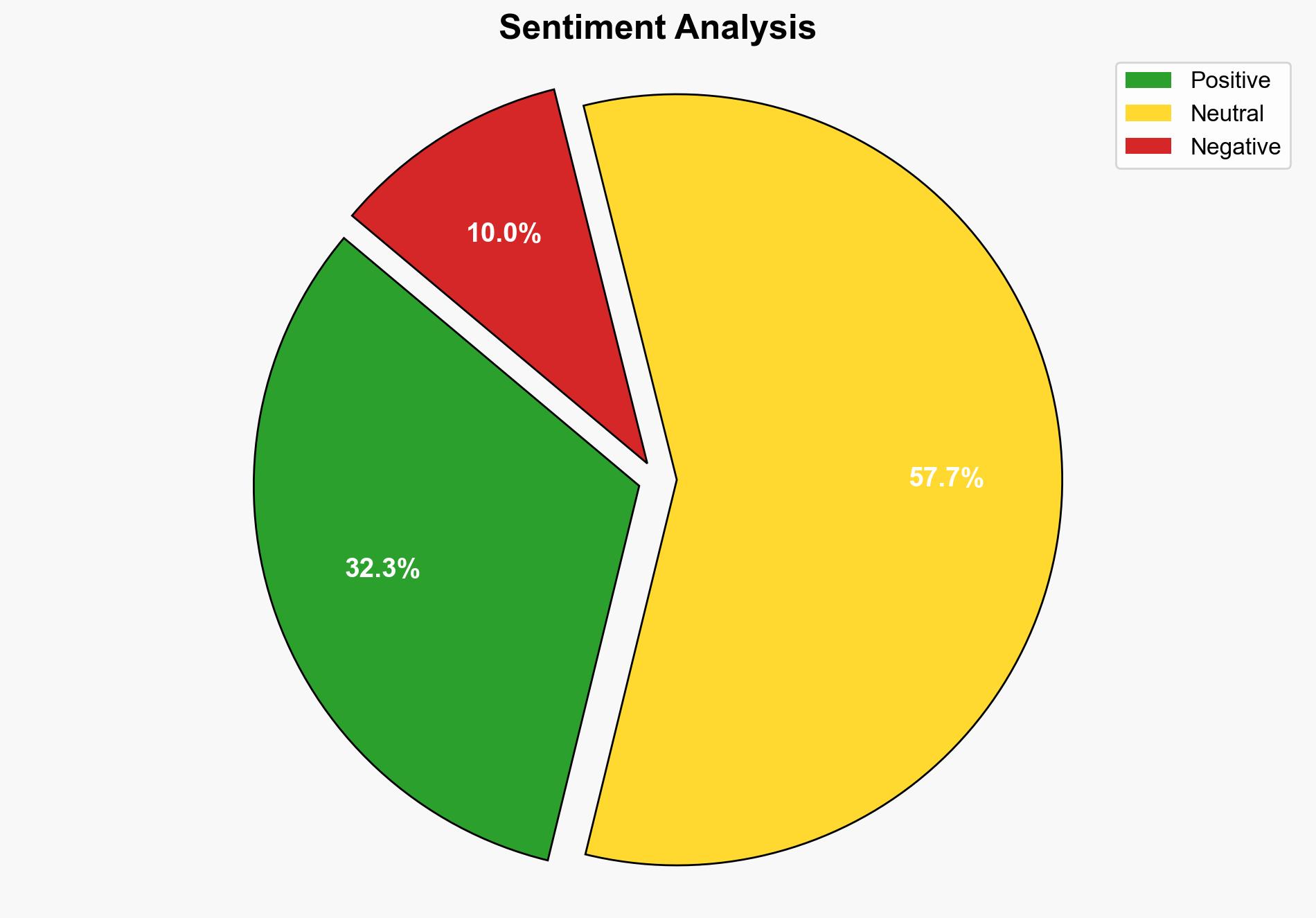Security Council Adopts Resolution 2799 2025 Removing Syria’s Transitional President Interior Minister from ISIL Da’esh Al-Qaida Sanctions List – Globalsecurity.org
Published on: 2025-11-07
Intelligence Report: Security Council Adopts Resolution 2799 2025 Removing Syria’s Transitional President Interior Minister from ISIL Da’esh Al-Qaida Sanctions List – Globalsecurity.org
1. BLUF (Bottom Line Up Front)
The adoption of Resolution 2799 by the Security Council, which removes Syria’s transitional leadership from the ISIL, Da’esh, and Al-Qaida sanctions list, signals a potential shift towards Syria’s economic recovery and political stabilization. The most supported hypothesis suggests this move is a strategic effort to foster Syria’s transition and counterterrorism commitments. Confidence Level: Moderate. Recommended action includes monitoring Syria’s compliance with international counterterrorism standards and preparing for potential geopolitical shifts in the region.
2. Competing Hypotheses
Hypothesis 1: The resolution is primarily a strategic maneuver to support Syria’s political transition and economic recovery, encouraging its new government to adhere to international norms and counterterrorism efforts.
Hypothesis 2: The resolution is a geopolitical strategy by certain Security Council members to increase their influence in Syria, potentially at the expense of genuine counterterrorism efforts and regional stability.
3. Key Assumptions and Red Flags
– **Assumptions for Hypothesis 1:** The Syrian government is committed to political transition and counterterrorism. The international community will provide necessary support for Syria’s recovery.
– **Assumptions for Hypothesis 2:** Certain Security Council members have ulterior motives, prioritizing influence over stability.
– **Red Flags:** China’s abstention and concerns about foreign terrorist fighters suggest potential instability. The resolution’s impact on regional power dynamics remains uncertain.
4. Implications and Strategic Risks
The resolution could lead to increased economic opportunities for Syria, potentially stabilizing the region. However, failure to address underlying security threats could exacerbate tensions. The geopolitical landscape may shift, with increased influence from specific Security Council members potentially leading to new alliances or conflicts.
5. Recommendations and Outlook
- Monitor Syria’s adherence to counterterrorism commitments and political transition milestones.
- Engage with regional partners to ensure balanced influence and prevent destabilization.
- Scenario Projections:
- Best Case: Syria successfully transitions, enhancing regional stability and economic growth.
- Worst Case: Increased influence by certain powers leads to regional tensions and undermines counterterrorism efforts.
- Most Likely: Gradual progress with intermittent challenges in political and security domains.
6. Key Individuals and Entities
– Ahmed Al Sharaa
– Anas Hasan Khattab
– East Turkestan Islamic Movement
7. Thematic Tags
national security threats, cybersecurity, counter-terrorism, regional focus





